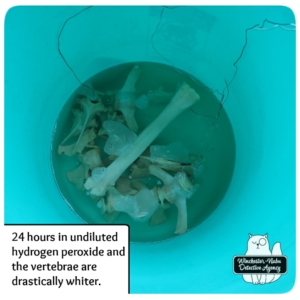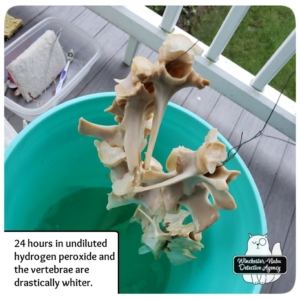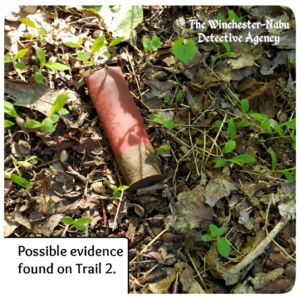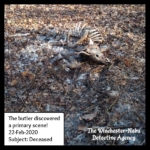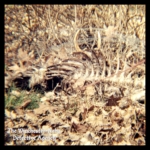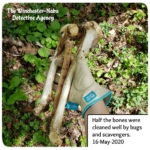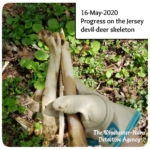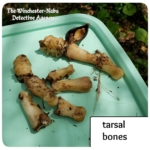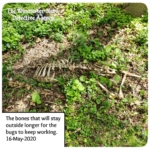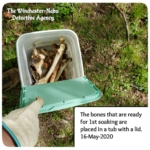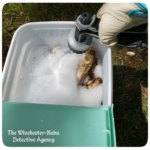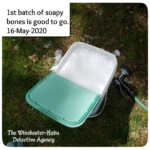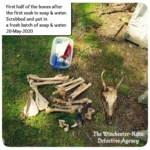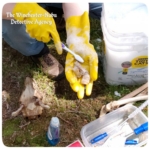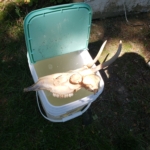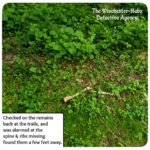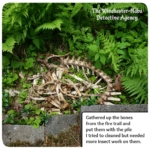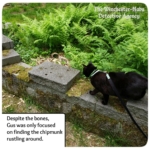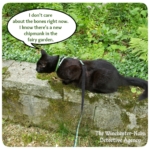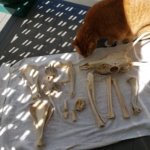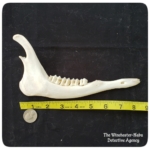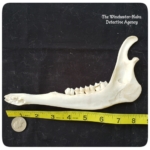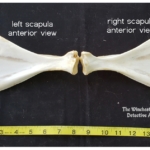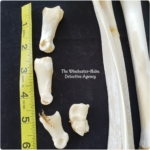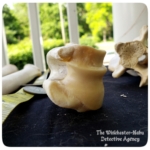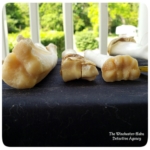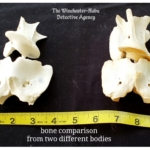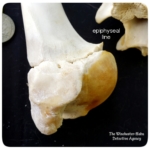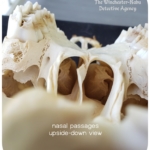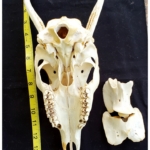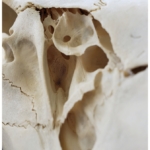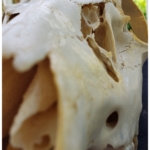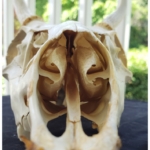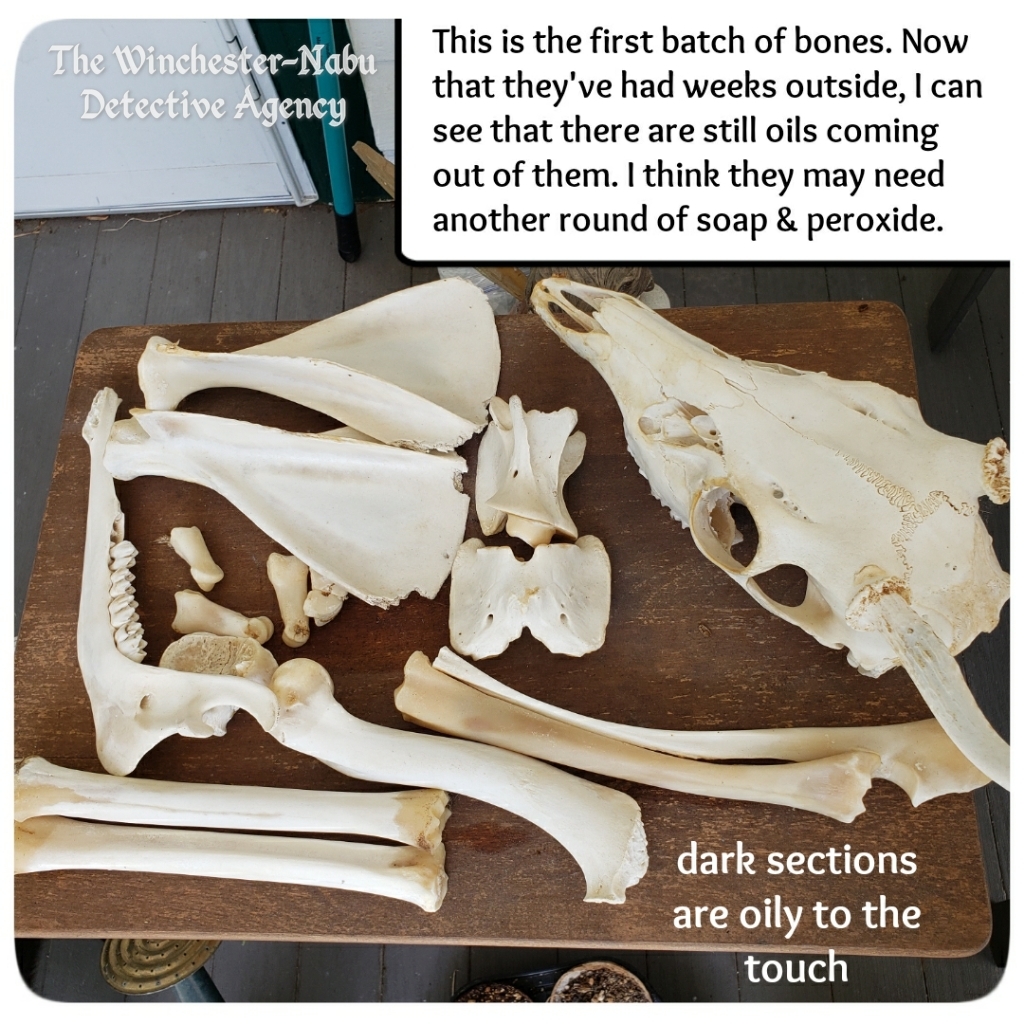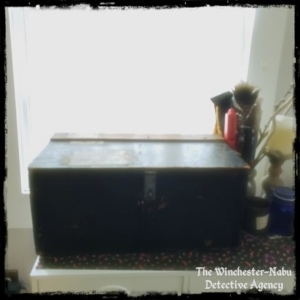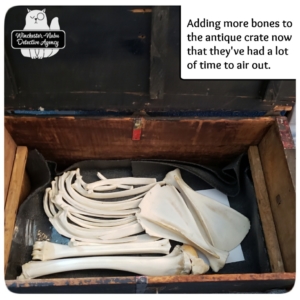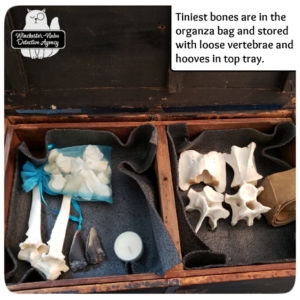Winchester-Nabu Detective Agency Year Four:
Case File No. 13-169
AMBER LOVE 10-AUG-2020 Find out how all this began. Catch up on Year One, Year Two, and Year Three cases at the Winchester-Nabu Detective Agency. Thank you for all your financial and social support! Oliver and Gus are looking forward to bringing you more fascinating discoveries and investigations into the chipmunk mafia, the blue jay gang, the neighborhood critters, and cryptid sightings.
This work is supported by the generous backers who adore my cat stories at Patreon.com/amberunmasked and they also get first access to what’s happening with my books and podcast. For a one-time tip, you can go to the new PayPal.me.
Where We Left Off:
We have our first record of meeting an actual fire elemental salamander, the red-spotted newt.
Dead on Course:
It’s time for a cumulative progress report on the Jersey devil-deer skeleton cleaning. I made videos of the first batch particularly to explain step-by-step how those bones were cleaned.
It is a dirty, stinky process.
Things to Do and Have:
- Let scavengers do their work.
- Let insects do their work too.
- Have a set of brushes of different shapes and sizes including basics like kitchen sponges and a toothbrush.
- Dawn dish soap.
- Hydrogen Peroxide — now when it comes to peroxide, I don’t think it’s necessary to go for the high percentage food-grade quality. I’ve been using the 3% H2O2 and it works. It’s not vibrantly bleach-white results, but it’s fine. Bones aren’t actually gleaming white.
- A set of long dishwashing gloves. I’ve gone through a few pairs.
- A bucket or container with a lid.
- Access to water.
- If you want to go through the boiling process which I did not do, be aware that it is a smelly process too. You’ll need the kitchen tools suitable. I’m thinking about doing a boiling style outside with a big metal barrel, but I don’t know if I’ll be able to find one without holes around the property. For that kind of tutorial, you’ll have to search through YouTube.
I did sadly have some scavengers steal big enough pieces of the carcass that whole sections of the bones are now missing.
Recapping:
- Before we knew what we going to discover, in February, Gus and I found some devil-deer hair in the woods at the trails.
- The corpse was found in the woods not easily accessible and not close to the house. We moved it over to a more accessible area and closer to our house. Gus, Oliver, and I declared that it was a wingless breed of the hybrid called the Jersey devil-deer which is the Jersey devil or demon bred with the common whitetailed deer.
- I covered the corpse with chicken wire, but didn’t have proper stakes in the ground. I wanted the birds specifically to be able to reach through the wire without taking off with whole pieces of the body. Beaks could easily fit through chicken wire. Rodents could come up from below to the carcass. Canines would have the most difficult time and would probably be the most likely to try and take the body elsewhere. We did get to see a couple vultures visiting during this. After another corpse was found (a different species), it seemed we had a decent body farm created.
- As the skin and soft tissue degraded or were eaten, the bones would more readily come apart. This allowed for cleaning in batches.
During this entire discovery and cleaning, I didn’t have a clear cause of death. During the body farm stage, I tried my best to examine the bones periodically to look for breakages or injuries. I didn’t see any obvious ones until the bones were picked quite clean. I think the scavengers were responsible for those breaks and it was probably from trying to pull the carcass apart and out of the chicken wire. Therefore it’s still not clear if it was a vehicle accident or a hunting victim. There was no arrow found nearby, but there was a shell found on a trail months later.
Process:
- Once the bones are as clean as possible from nature, they go into the first soapy water bath and sit for a week.
- The water is changed and the bones get a fresh soapy water bath for another week. Scrubbing the remaining soft tissue is possible here.
- Perhaps another scrubbing after that week. Then the bones are put into the hydrogen peroxide solution. The first batch, due to the height of the antlers and the container I used, I had to dilute the peroxide with more water than in the second batch.
- After a week, the solution bath is refreshed with another hydrogen peroxide and water solution.
- After yet another week, the bones are removed. If they look clean enough, they are laid out in the sun to dry. This drying part will show a big change in the whiteness of the bones. If you’ve ever used peroxide-based products on your hair and then sat in the sun, you know it’s a chemical change.
Bone Cleaning Gallery:
After the first batch sat outside for weeks, I noticed that oils were still seeping through the bone cells. Some of them are greasy to the touch. You can even see how the oils were affected by gravity and pooled to the lowest resting place depending on how the bones were laid down.
In the videos there are some interesting comparisons of note. There are vertebrae I purchased compared to the vertebrae of this specimen showing a difference in their sizes and also how much whiter the purchased ones are. There is also a femur with the head still attached on the one side, but it knocked off on the other side so you can see the importance of the epiphyseal junction.
Case Findings:
We still have more to do. There’s still no cause of death.


